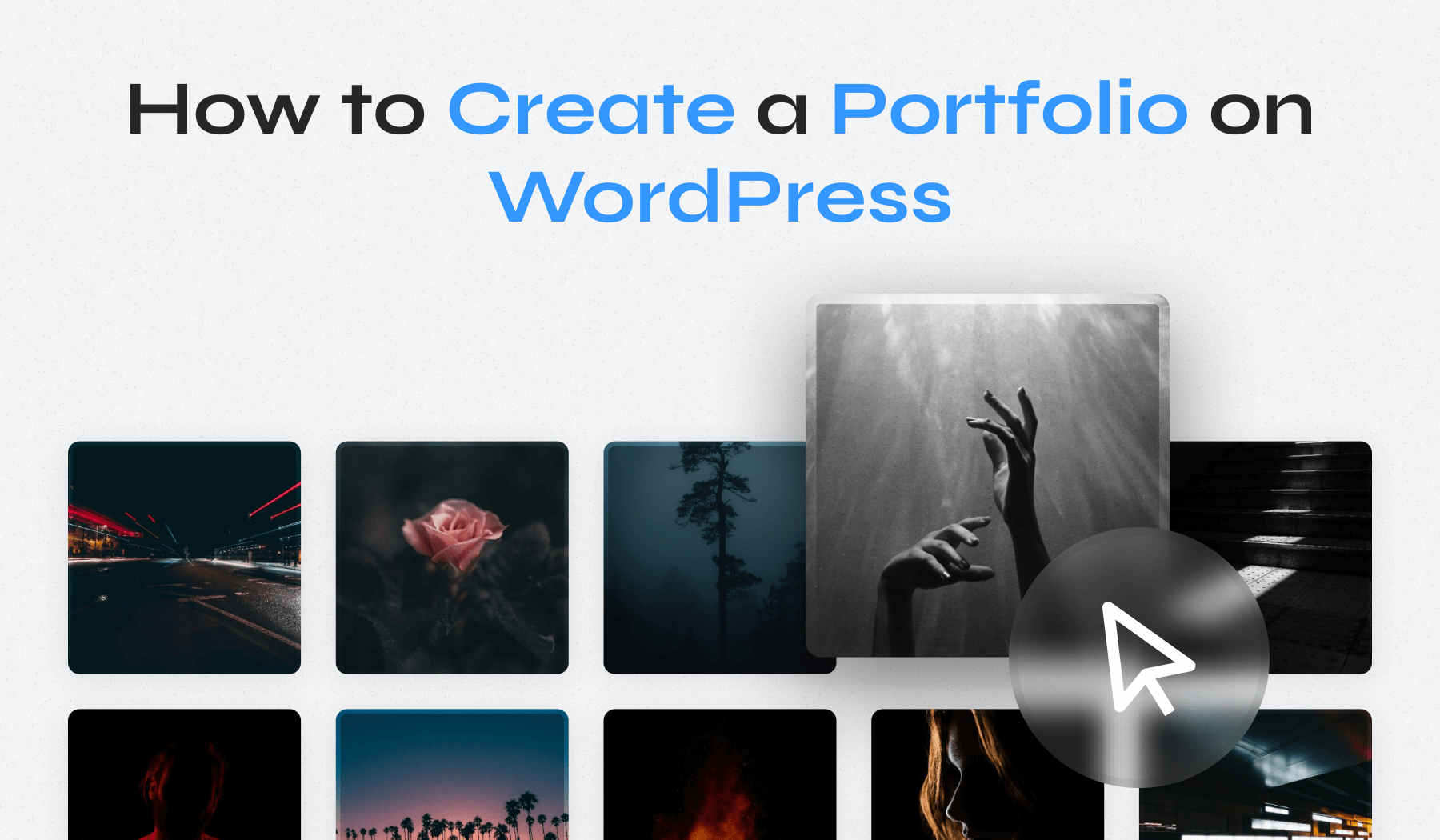
Your work deserves to be seen, and a WordPress portfolio is the perfect way to make that happen. Whether you’re a photographer, designer, artist, or writer, our guide on how to make a portfolio in WordPress is here to help you every step of the way.
Imagine the impact of a beautifully crafted portfolio that showcases your skills and tells your unique story. Let’s create a portfolio that truly represents you!
How to Create a Portfolio in WordPress: Quick Guide
- Step 1: Register a Domain Name
- Step 2: Choose a Hosting Provider
- Step 3: Install WordPress
- Step 4: Select a Portfolio Theme
- Step 5: Install Must-Have Plugins
- Step 6: Builde a Portfolio Page
- Step 7: Create an “About Me” Page
- Step 8: Set Up a Contact Form
- Step 9: Promote and Expand Your Portfolio Site
Let’s examine these steps in more detail to ensure you’re prepared to make a portfolio website on WordPress.
9 Steps to Make a Portfolio on WordPress: A Detailed Guide
1. Register a Domain Name
Choosing a domain name is like picking out the perfect address for your online home! Have you thought about what name you’d like to use? A catchy, memorable domain name can make a huge difference, helping potential clients find you quickly and easily.
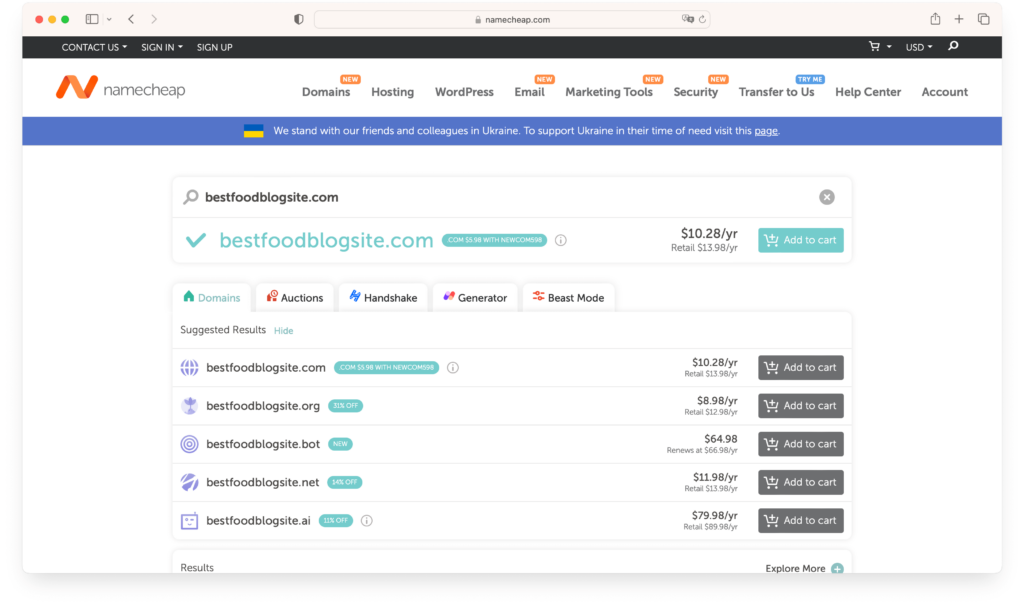
Think about something short and sweet – something that sticks in people’s minds and avoids those pesky typos. Maybe it’s your name, your brand, or a clever combination that reflects your unique style. Don’t worry if your first choice isn’t available. Sometimes exploring different extensions, like .net, .org, or even something fun like .design, can open up new possibilities that perfectly fit your vibe.
As you brainstorm, keep in mind the importance of originality. You want a name that’s uniquely yours and doesn’t infringe on any trademarks. This way, you’ll stand out and avoid any legal issues down the road.
Now that you’ve nailed down your perfect domain name, it’s time to choose a hosting provider.
2. Choose a Hosting Provider
Think of this as finding a reliable landlord for your new online home. The right hosting provider can make all the difference in how smoothly your WordPress portfolio runs.
So, what should you look for in a hosting provider? Speed and reliability are key. You want your site to load quickly and be accessible to visitors 24/7. Have you ever visited a website that takes forever to load? Frustrating, right? We want to avoid that for your visitors. Look for a host with excellent uptime – this means your site will be live and running smoothly most of the time.
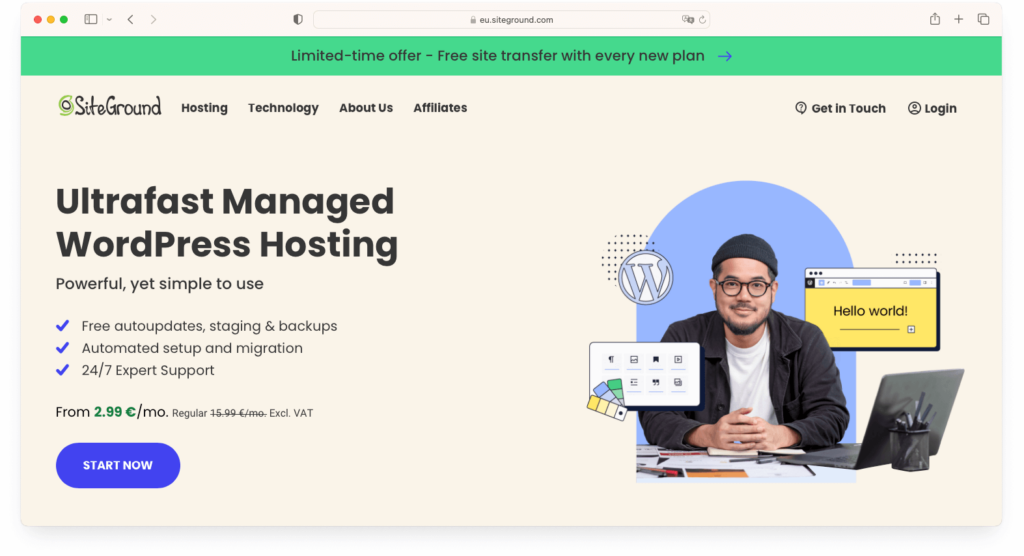
Customer service is another crucial factor. When tech issues pop up (and they sometimes do), having a host with responsive, helpful support can save you a lot of headaches. Imagine having a team ready to assist you whenever you need help – that’s the kind of service you deserve!
If you’re using WordPress, picking a host that specializes in WordPress can make your life much easier. These hosts often provide perks like one-click installs, automatic updates, and expert WordPress support. They understand the platform inside and out, ensuring your site runs optimally.
Some hosting providers also offer domain registration bundled with their plans. This can simplify things, giving you one less thing to manage. Plus, some even throw in the first year of domain registration for free – bonus!
Now, let’s get WordPress up and running.
3. Install WordPress
WordPress is your go-to for building an online portfolio website. It’s user-friendly, letting you put together, manage, and show off your work smoothly. Here’s how you can install WordPress with ease:
- Access Your Hosting Account: First, log into your hosting account and navigate to the control panel (often called cPanel). This is your mission control for all things hosting-related, including setting up your website.
- Find the WordPress Installer: Look for a section dedicated to website installations or a specific WordPress installer tool. Most hosts use software like Softaculous or similar, which automates the installation process.
- Start the Installation Process:
Click on the WordPress installer to begin. You’ll be asked to choose the domain where WordPress should be installed. Make sure you select the correct domain from your list. - Fill in the Details:
The installer will need some basics from you – your website title, admin username and password, and your email. These details are essential for logging into and managing your site later on. - Tweak the Advanced Stuff (If Needed): You might see some advanced settings like database configuration. Most users can stick with the default settings, but if you have specific needs, now’s the time to adjust them.
- Complete the Installation: Follow through with the installation steps. It’s usually quick and easy. Once done, you’ll receive a confirmation with links to your new site and the admin area.
- Log Into WordPress: Use the admin URL and login info you set up to access your WordPress dashboard. Welcome to your new creative playground!
With WordPress installed, you’ve laid the groundwork for your portfolio site. This is where the fun truly begins – customizing your site, adding your work, and making it uniquely yours. Let’s find the perfect theme to showcase your amazing work!
4. Select a Portfolio Theme
Think of this as choosing the right outfit for an important occasion – it should look great and make you feel confident. Here’s how to make the best choice:
- Prioritize Visual Appeal and Functionality: Your theme should not only be visually stunning but also functional. You want visitors to be wowed by your portfolio and have a seamless experience navigating through it. Do you have a particular style in mind? Maybe something minimalist, bold, or creative?
- Look for SEO-Friendly Options: A good theme should be SEO-friendly, helping your site rank higher in search engine results. This means more potential clients can find you. Don’t worry if SEO sounds complex – many themes come with built-in SEO features to give you a head start.
- Customize to Fit Your Brand: Choose a theme that lets you customize colors, fonts, and layouts. This way, you can tailor your site to reflect your unique brand and style. You’re building a digital representation of your creativity, so make it truly yours.
- Check Responsiveness: Ensure your theme is responsive, meaning it looks fantastic on all devices – desktops, tablets, and smartphones. With more people browsing on mobile devices, a responsive design is crucial for providing a great user experience.
- Test Before Finalizing: Many themes offer live demos. Take advantage of these to see how your portfolio will look. Play around with the features and layouts to make sure it fits your vision perfectly.
If you’re looking for a top recommendation, check out Inspiro PRO. This professional portfolio theme is perfect for creatives. With its focus on the Elementor page builder, it offers incredible customization options. Its video and photo capabilities are top-notch, allowing you to showcase your work beautifully.
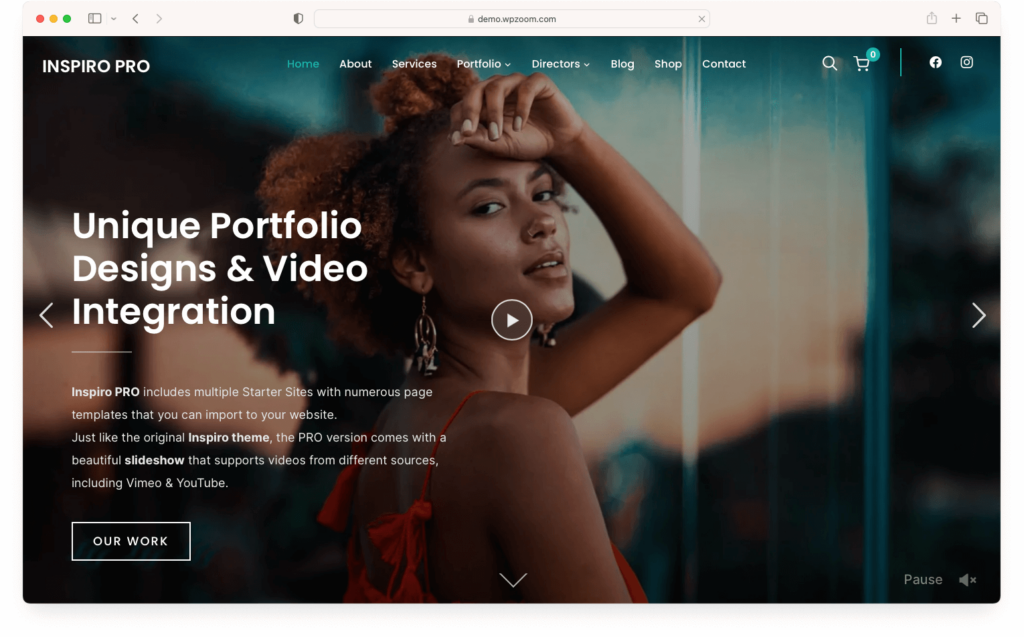
For additional options, check out our collection of WordPress portfolio themes.
Let’s move on to installing those must-have plugins that will enhance your site even further!
5. Install Must-Have Plugins
WordPress plugins are all about adding those extra features that make your site more functional and user-friendly, like better SEO, quicker load times, social media buttons, and handy contact forms. But with so many plugins out there, the trick is to pick ones that amp up your site without slowing it down.
To help you out, we’ve compiled a list of must-have plugins that are great for any site. These picks cover a broad range of needs with reliable, top-notch plugins.
But, there is one plugin that no portfolio website can do without – WPZOOM Portfolio PRO, an essential tool for showcasing creative work in a polished and professional manner.
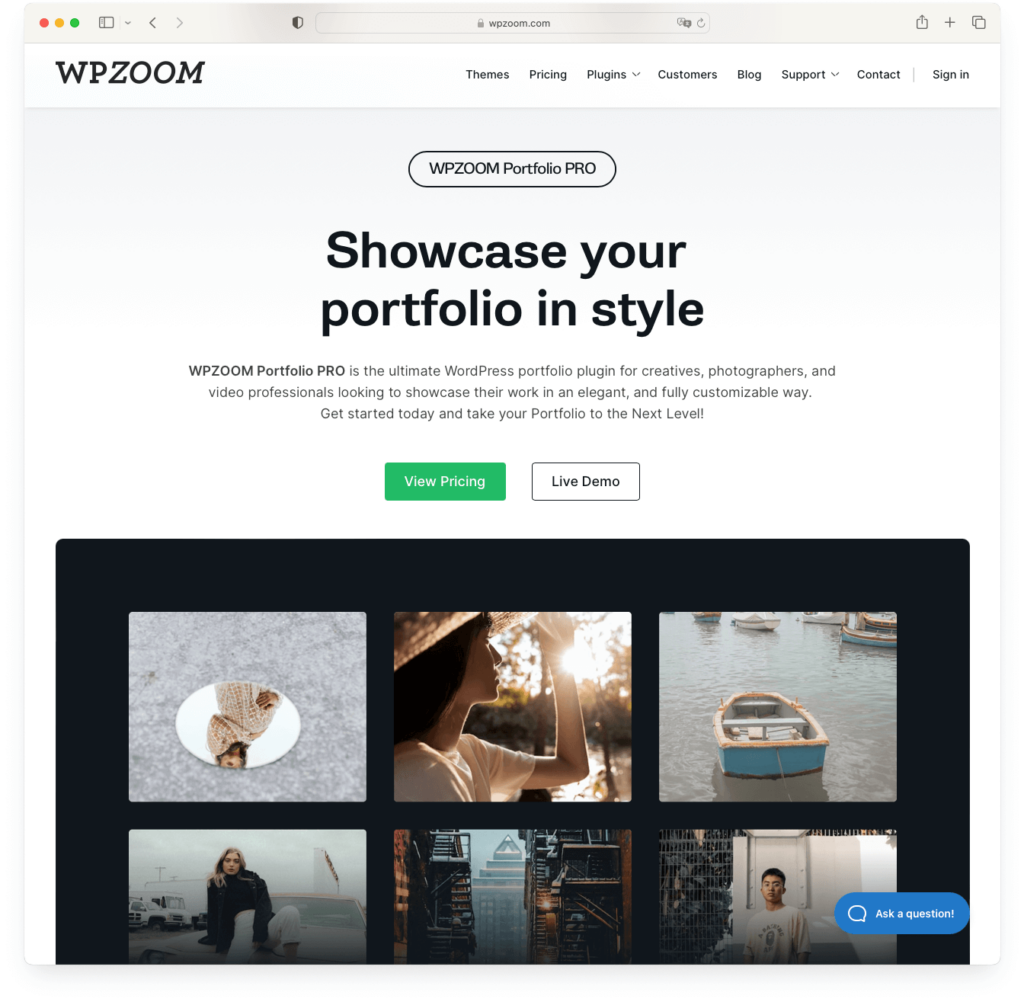
It’s crafted for artists, photographers, and video wizards looking to present their projects in style. You can pop images into a sleek lightbox for viewers to enjoy in full glory or embed videos from places like YouTube and Vimeo right in your online portfolio. It even handles videos you host yourself.
6. Build a Portfolio Page
This is your moment in the spotlight. Your portfolio page is where you showcase what you’re good at and capture the attention of potential clients. Think of it as setting up your art gallery online – you want every visitor to be wowed by what they see.
- Start with a Clear Structure: Begin by mapping out the structure of your portfolio page. Do you have categories or themes that organize your work? Sorting your projects this way makes it easier for visitors to find exactly what interests them.
- Highlight the Stars: Resist the urge to post every project you’ve ever done. Instead, choose the ones that best showcase your talent and the work you want to do more of. What are your standout pieces? Mix it up to show off your versatility and attract a wider audience.
- Showcase Project Details: For every project you showcase, include vibrant images or videos, a brief description, your role, the tools you used, and the results. Sharing the challenges you faced and how you tackled them highlights your problem-solving abilities and adds depth to your showcase.
- Optimize Images and Videos: Optimizing your media files ensures your page loads swiftly and looks sharp across all devices. Lazy loading for your images and videos can also speed things up, loading content just as needed.
Optimize Images and Videos: Optimizing your media files ensures your page loads swiftly and looks sharp across all devices. Lazy loading for your images and videos can also speed things up, loading content just as needed. - Implement Interactive Elements: Enhance your page with interactive elements like hover effects, lightboxes, or sliders to give visitors a closer look at your work without leaving the page. Just make sure these features enhance rather than interfere with the user experience.
- Include Descriptive Text: Adding a bit of text to each project gives context and offers insights into your creative journey. Share the goals, challenges, solutions, and impacts of your work. Well-thought-out descriptions let visitors appreciate your skills and thought process more deeply.
- Keep It Updated: To stay current, keep your portfolio updated with your latest projects. Equally, phase out older work that no longer represents your best. A regularly updated portfolio shows you’re growing and evolving in your field.
Creating an impactful portfolio page goes beyond just showing off your work; it’s about narrating your creative path and professional development in a way that engages and resonates with your audience.
7. Create an “About Me” Page
Your “About Me” page is where you get to tell your story and introduce yourself to potential clients. It’s a chance to connect on a personal level and share what makes you unique.
- Start With a Friendly Hello: Kick things off with a warm greeting. Use a casual tone to talk about who you are, what you do, and what sets your work apart. This is your moment to leave a great first impression, so keep it real and let your unique personality come through.
- Share Your Background and Experience: Talk about your professional journey, including your education, key experiences, and the path that brought you here. Celebrate the big wins and lessons learned along the way. This adds to your credibility and gives a glimpse into your depth of knowledge and commitment.
- Highlight Your Skills: Describe your talents and what you’re good at. Make it clear whether you’re a wizard at web design, a photography storyteller, or a coding guru. This clarity helps those potential clients or employers see how you fit into their puzzle.
- Include a Professional Photo: Pick one that shows your professional side and hints at your personality. A good photo can make your audience feel more connected to you.
- Share Your Values and Work Philosophy: Share your core values and what fuels your work. Whether you thrive on creativity, tackling challenging problems, or advocating for green design, letting people know what matters to you can help attract those with similar values.
- Include Testimonials: If you’ve got glowing reviews from clients or colleagues, showcase a couple. Testimonials lend you extra credibility and offer an outsider’s view of your work’s reliability and quality.
- Add a Call to Action: Close with a direct call to action. Prompt visitors to check out your portfolio, reach out for work, or follow you online. Make it super easy for them to get in touch or see more of your work.
When sharing your story and information, create an exciting and informative narrative. This will encourage your audience to learn more about you and your journey in creativity.
8. Set Up a Contact Form
A contact form makes it easy for future clients or partners to contact you directly from your WordPress website.
WordPress offers plenty of plugins perfect for crafting contact forms. Favorites like Contact Form 7, WPForms, and WPZOOM Forms stand out for their user-friendly interfaces, flexibility, and reliability.

Think about what info you need when setting up your form. Stick to the basics: name, email, and message. Skip any extra fields that might make someone think twice about filling it out.
Make sure your contact form is easy to find. Putting it on a dedicated “Contact” page is a solid move. It gives users a specific spot to reach out. Also, add a link to your contact page in your site’s navigation menu or footer. This way, no matter where someone is on your site, they’re always just a click away from contacting you.
Once your form is up and running, have a plan for responding to messages quickly. Setting up automated emails to acknowledge receipt and give an idea of when you’ll reply keeps communication smooth. Prompt, professional responses make you look good and build trust with your visitors.
9. Promote and Expand Your Portfolio Site
Congratulations! Your portfolio site is live, and it’s looking fantastic. But the journey doesn’t end here. Now, it’s time to promote your site and expand your reach to attract potential clients and opportunities.
Ready to spread the word and grow your audience?
- Use Social Media Wisely: Social platforms are excellent for showcasing your work and drawing people to your site. Post your best projects, updates, and sneak peeks on platforms where your audience hangs out, like Instagram, X, Pinterest, Behance, or Dribbble. Engage with your followers to create a community vibe. Have you thought about using plugins like Instagram Widget or Social Media Icons Widget to integrate your social media seamlessly with your site?
- Join Online Groups: Dive into online forums and communities related to your field. Places like Reddit, Quora, or niche-specific forums are great for sharing your expertise, helping others, and subtly pointing them to your site. Being helpful and engaged boosts your visibility and attracts more eyes to your work.
- Use SEO Best Practices: SEO helps your site appear more in search engine results. Use the right keywords, properly label your images, and ensure your website looks good on any device. Keeping your site updated with new content also helps improve your search ranking, making you easier to find.
- Consider Blogging: Adding a blog to your portfolio can share more about how you work, industry insights, or how-tos. Quality posts can attract more visitors, show you’re an expert, and help your site’s SEO.
- Consider Blogging: Adding a blog to your portfolio can share more about your work process, industry insights, or how-tos. Quality posts can attract more visitors, showcase your expertise, and help your site’s SEO.
- Leverage Email Marketing: Building an email list allows you to keep in touch with people interested in your work. Share updates, new projects, and exclusive content to keep them engaged. Tools like Mailchimp or Constant Contact can help you manage your email campaigns effectively.
Promoting and growing your portfolio site is an ongoing journey. With the right strategies, you can boost your visibility, connect with more people, and open doors to new opportunities and collaborations.
Bottom Line
You’re all set to create, personalize, and boost your online portfolio website, making it a dynamic showcase of your work. Whether you pick an eye-catching WordPress theme like Inspiro PRO or choose a portfolio plugin like WPZOOM Portfolio PRO, every decision is crucial to your website’s effectiveness.
The real secret to a thriving portfolio site lies in consistent dedication, a willingness to evolve, and a true passion for your craft. Keep exploring new ideas and be ready to adapt. Staying curious and flexible is essential for keeping your site fresh and engaging.
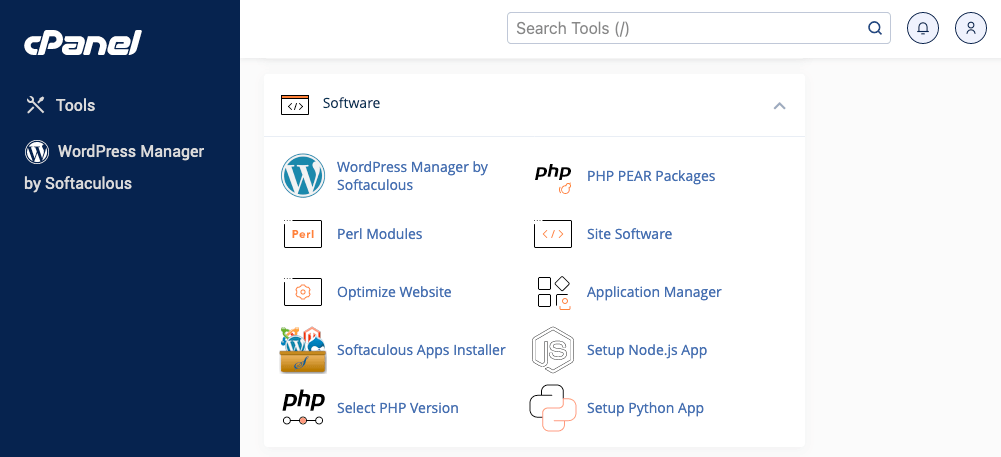

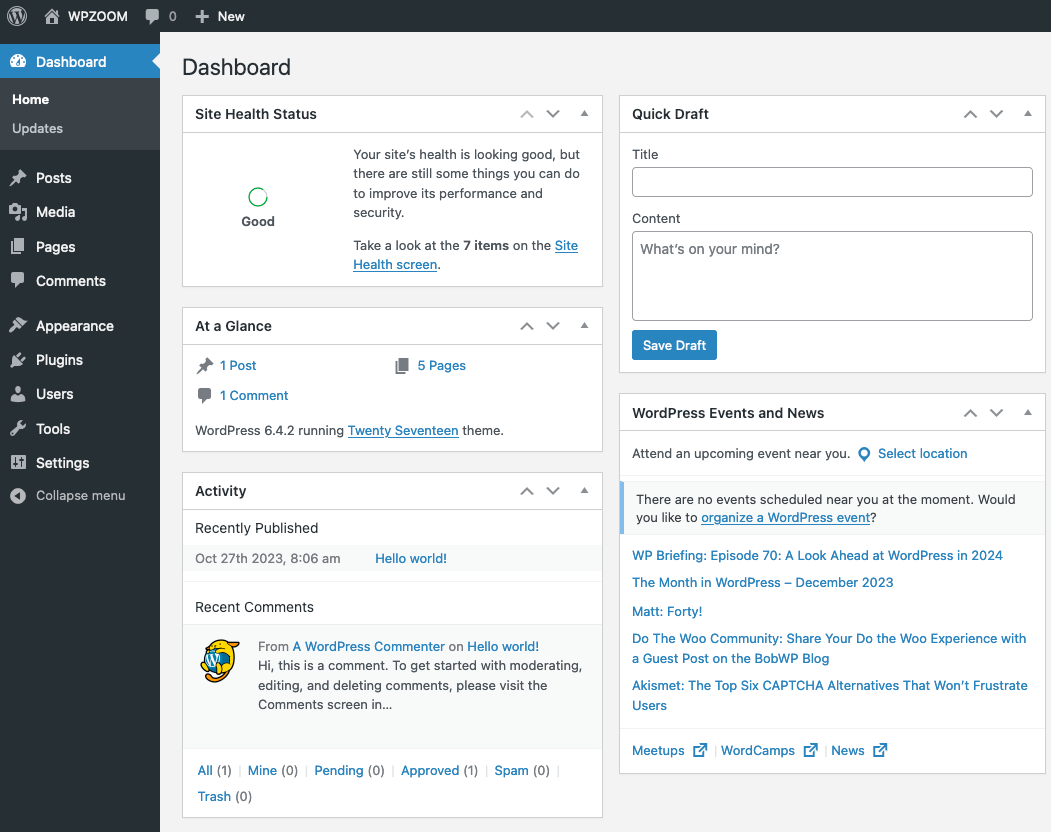
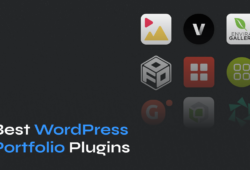



February 11, 2020 12:02 pm
This portfolio is good but it has 1 problems Even better if there is a shortcode option in this portfolio